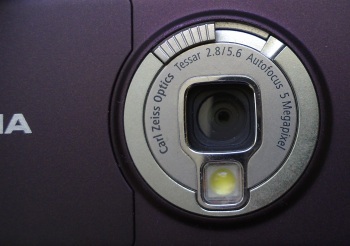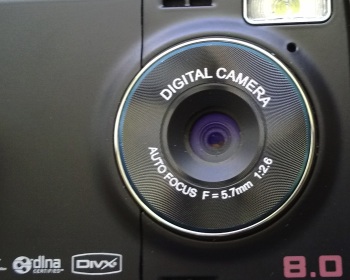 At first glance, the question of focus when capturing a video seems a no-brainer. "Of course it's worth having! Surely focussed is better than unfocussed?" However, there's more to consider than just 'off' or 'on'.
At first glance, the question of focus when capturing a video seems a no-brainer. "Of course it's worth having! Surely focussed is better than unfocussed?" However, there's more to consider than just 'off' or 'on'.
Shortly after the first focussing cameras hit smartphones (e.g. the Nokia N73), the idea popped up to use the focussing optical elements in video capture as well. The Nokia N93i debuted the idea, with the initial prototypes sent out to reviewers featuring continuous auto-focus. This worked as advertised, with the software monitoring contrast every second and 'hunting' the optics to adjust focus if needed. However, the N93i ran up into two problems:
- The sounds of the lens rattling in and out on its rachets was picked up obtrusively by the N93i's microphones. These had already been relocated to the top of the device so as not to pick up motor noise from the optical zoom motor, but they still picked up the focussing noise.
- Nokia engineers were worried that the continual use of focus in video mode would wear out the delicate mechanism prematurely.
We then move to the N95, N95 8GB and N82, each of which used a different approach, presetting the lens focus at a couple of metres and relying on the 'depth of field' in good light conditions to allow 'good enough' focus on objects both close and far away. And, on the whole, this approach worked well and continues to work well. It's used today on the N86. The N79, N85, N96 and N97 all shipped with a different camera unit and problematic firmware that didn't allow for pre-focus, with the result that anything remotely close to the phone was blurred. (Although, interestingly, the N96 v30 firmware seems to be attempting pre-focus and produces similar results to the N95 - maybe such pre-focus can be applied to the N97 in firmware too? Nokia? Are you listening?)
Meanwhile, away from Nokia, we've had the likes of the Samsung INNOV8, Motorola Z10 and Apple iPhone 3GS all allowing initial focus in video capture, i.e. at the start of a clip you squeeze the shutter button (or tap the screen, in the iPhone's case) to focus on a particular subject and then this focus is maintained throughout the clip. Giving a measure of focussing control without subjecting the mechanism to continuous wear and tear and noisy operation.
As mentioned at the top, it's natural to assume that, in terms of focussing, continual > initial > none, but the situation's not quite that simple. We'll rule out 'continual' for wear and tear/noise reasons (for now, though see below), which leaves us with the two most common solutions used today.
| Presetting lens focus | Allowing initial focus by user | |
| Pros |
|
|
| Cons |
|
|
| Example device |  |
 |
In truth, it's hard to pick an overall winner here. The optimum would be to have both systems available in the one camera phone and you get to pick in the Settings. But then the optics couldn't be optimised one way or another.
- For general use, the preset focus of the Nokia N95/N82/N86 is probably better and less prone to things going wrong.
- For videos where there's time to briefly plan what you're going to shoot, the initial focus system (as on the Samsung INNOV8, the iPhone 3GS and some HTC devices) will produce crisper video frames.
If you're torn between which system to plump for, then other video/camera attributes will come into play, e.g. the N86's super sensor, real digital zoom and low-light-loving aperture, the N82's Xenon flash for evening still shots. And finally, other phone attributes will be considered - of course. I doubt anyone's going to choose a smartphone solely on its video capture system and performance, but at least you'll be a little more aware now of the differences and their pros and cons.
Steve Litchfield, All About Symbian, 15 July 2009
PS. With the advances in microelectronics, I fully expect to see a camera phone with continual autofocus in video mode at some stage. The problems of wear and tear and noise will be solved and then this whole feature will be moot - you'll simply point and shoot your phone and it'll focus on whatever's in the centre of the viewfinder. [And then some arty people will complain that they want to focus on something else in the frame, so manufacturers will have to put in a toggle to switch the continuous autofocus off again! - sigh.....]
